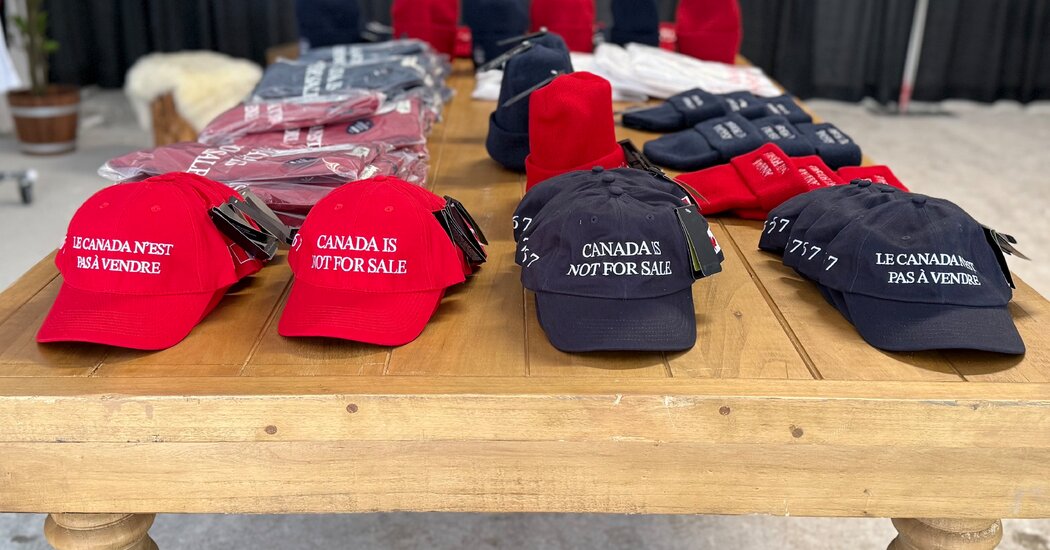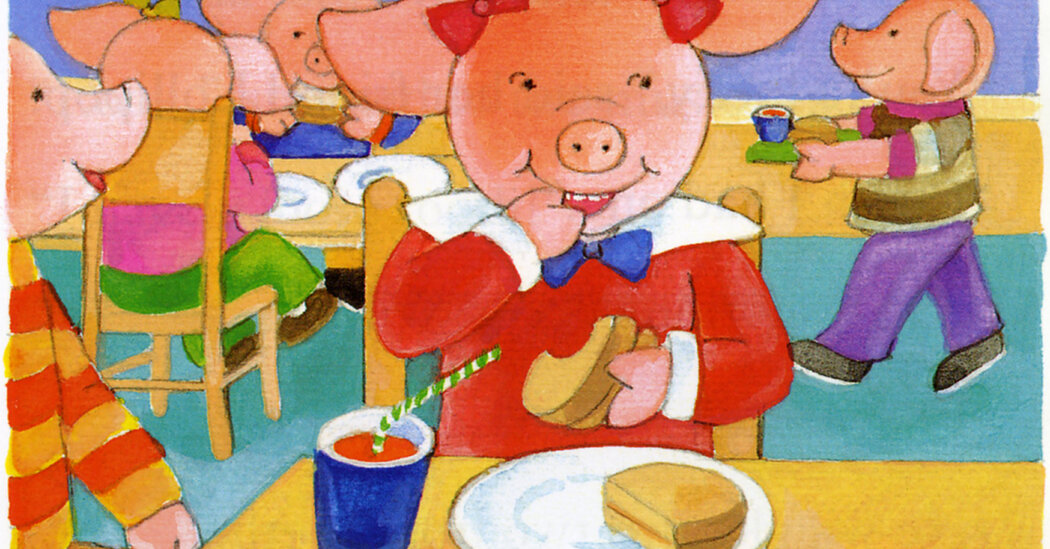
The Anti-MAGA Hat Goes Global
The recent visit by Vice President JD Vance, his wife, Usha, and the national security adviser Michael Waltz to the U.S. military base in Greenland may have been met with a cold shoulder, but it did produce at least one hot item.
The week before the Vances’ arrival, Aannguaq Reimer-Johansen, a consultant at KNI, a trading conglomerate in Greenland, posted a photo on his Facebook page of what looked like a bright red MAGA hat. Only, instead of the usual “Make America Great Again” in white letters, Mr. Reimer-Johansen’s cap read “Make America Go Away.”
It touched a nerve — and not just locally. The hats ended up on “The Daily Show” and “The View.” Across social media, the general reaction was “I want one.” Tina Brown compared it to “the French Resistance on ice,” thus connecting the red cap to the “bonnets rouges” of the French Revolution.
It turns out that the very success of the MAGA hat as a symbol of political allegiance — its instant recognizability, even on the small screens of smartphones — has also made it an effective weapon of the opposition, at least internationally. Parody with a point.
The Greenland hats come in the wake of a Canadian hat protest that began earlier this year in response to President Trump’s threats to make Canada the 51st state. That was when Doug Ford, the premier of Ontario, wore a trucker hat that looked like a “dark MAGA” hat, only this one bore the words “Canada Is Not For Sale.”
That hat, which is also available in MAGA red and white, set off a similar social media hoo-ha and thrust its creators, Liam Mooney and Emma Cochrane of Ottawa, onto an unexpected career path. They have now created a brand called Canada Is Not For Sale and, Mr. Mooney said, have sold more than 40,000 of the hats, not only in Canada but “in almost every country in the world.” Instead of petering out, the demand is growing. (Mr. Ford recently urged a man who wore his “Canada Is Not for Sale” hat, somewhat controversially, to a Blue Jays game, to “never take that off.”)
After all, “two can play the hat game,” Mr. Mooney said. Or three, for that matter.
The Greenland and the Canada MAGA hats are part of a long tradition of protest and protest art that embraces the familiar and subverts it, said Ruth Ben-Ghiat, a professor of history at New York University and the author of “Strongmen: Mussolini to the Present.” “It takes a ubiquitous symbol that is visually arresting and appropriates it with an entirely different message,” she said.
“Authoritarians in general have been very savvy about apparel and creating clothing with tribal affiliations that people can wear on their body,” she continued. “Trump is a marketer, so he understands this.”
He has been expert at merching his message, especially in items like the hat, modeling it so relentlessly that it has transcended its origins as a piece of campaign swag to become part of the semiology of the administration. He even tossed a hat into his audience at his “liberation day” tariff announcement, like a souvenir of the moment. Its message can also be iterated depending on the audience, as in Robert F. Kennedy Jr.’s MAHA slogan — Make America Healthy Again.
“The point is to absorb the tactics of Trump but change the message,” said David Soberman, a professor of marketing at Rotman School of Management at the University of Toronto.
This is effectively what psychologists call the “poison parasite defense,” which occurs when a new meaning is attached, like a parasite, to a familiar “host message,” so when you see the one, you think of the other. (This is also a Trump tactic, notably employed with his mug shot, which he turned into a rallying cry and portrait of power rather than shame.)
Why have the Greenland and Canada hats taken off while similar attempts at parody protest in the United States, including “Make America Gay Again,” “Make NATO Great Again” and “Make America Normal Again” hats — all of which are widely available online at Etsy or Redbubble — have had less impact? Anat Shenker-Osorio, a political strategist and messaging consultant, said she thought there were two reasons.
First, the Democrats failed to focus on one sartorial message. Instead they splintered into interest groups, with their hats, as with their positions. By contrast, she said, the Greenland and Canada hats united people not just in protest against a foreign incursion but in support of their own country.
“It really says, ‘I stand for the idea of a sovereign nation,’” added Mr. Mooney, who said that he has received requests for his hats from Canadians across the political spectrum, not just from liberals but from Conservatives and members of the left-of-center N.D.P.
Then, Ms. Shenker-Osorio said, the hats represent the three components you need for a successful protest: “resistance, refusal and ridicule.”
“Ridicule is critical,” she said.
Mr. Reimer-Johansen did not respond to requests for comment, but Mr. Mooney thinks the appeal of his hats is simple. “Policy and trade pacts and international relations can be very confusing,” he said. “This cuts through all the noise.”
That is why Ms. Ben-Ghiat believes the merching of the anti-MAGA movement is just beginning. As imagery spreads across social media, she said, “what someone invents in Greenland may be embraced in Canada, Mexico and America.”









